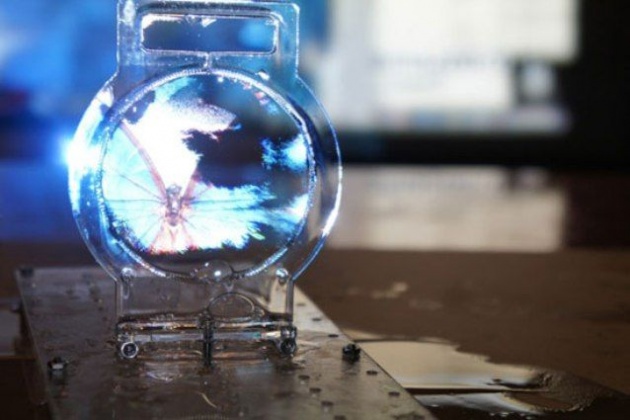A team of Japanese researchers at the University of Tokyo, University if Tsukuba and Carnegie Mellon University managed to come up with a way of transforming a transparent membrane into a see-through display. This could pave way towards displays with flexible designs.
The scientists from the team say that the pictures reflected on the BRDF (bidirectional reflectance distribution function) screen can be managed with the help of ultrasonic sound waves. With different vibrations various textures can be generated.
According to Dr. Alexis Oyama from the Carnegie Mellon University, the device could change the way we "see" an image. He says: "For example, a butterfly's wings should be reflective and a billiard ball should be smooth, and our transparent screen can change the reflection in real time to show different textures."
In short, the images shown on the colloidal screen will look more realistic. The user will have the feeling as if they can feel the texture of the picture.
In addition, in case more layers of the bubble displays are combined, it is possible to achieve a 3D/holographic projection.
It would be interesting to note that the bubble will not pop since it is quite thick, in fact so thick that some objects can be passed through it and it will not go off.
World's Thinnest Display Made from Soap Bubbles
Posted on at



